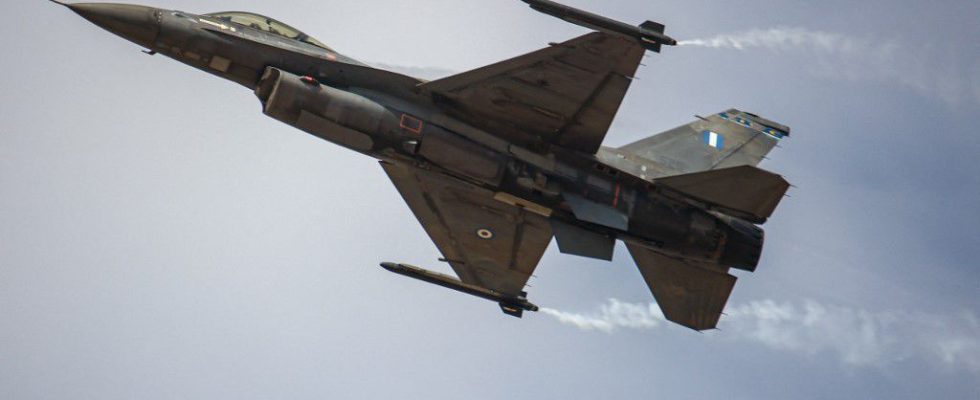For kyiv, which has been asking for them since the start of the conflict, this is a major diplomatic victory. The announcement of the delivery of US F-16 fighter jets by the Netherlands and Denmark on August 20 marks a turning point in Western military support for Ukraine. “For the Ukrainian forces, which mainly have MiG-29s of Soviet origin, it’s like going from a Lada to a Ford Mustang!, summarizes reserve general Jérôme Pellistrandi, editor-in-chief of the National Defense Review. They are extremely capable fighters. They can carry out air-to-air missions, i.e. intercept Russian fighter planes or helicopters, but also support missions for the benefit of forces engaged on the ground.”
Denmark has confirmed the delivery in the coming months of 19 aircraft, to which will be added other models of this type supplied by the Netherlands – the exact number has not yet been confirmed by Amsterdam, although Volodymyr Zelensky has evoked that of 42. “Overall, the F-16s compete with some of the best Russian combat planes, judge Xavier Tytelman, former military aviator and aeronautical expert. It is a significant reinforcement of Ukrainian capacities which will make it possible to reduce the Russian air threat .” Manufactured by the American company Lockheed Martin, and developed in the United States in the 1970s, the F-16 is one of the most widely used aircraft in the world and represents nearly 16% of the world’s combat fleet.
“Very important range of precision weapons”
This is a major qualitative leap for Ukraine and its aging fleet. “The models that should be sent to Ukraine were renovated ten years ago and have a more modern and efficient combat system than their counterparts of Soviet origin, underlines General Pellistrandi. The data radar of these models will notably allow pilots to deal with more distant targets”. This is not their only asset. “The F-16s have a very large range of precision weapons, adds Xavier Tytelman. They will also strengthen Ukraine’s strike potential, by increasing the number of devices capable of launching missiles such as Scalp or Storm Shadows, of which there are only ten at present.”
These deliveries by Copenhagen and Amsterdam – after having officially obtained the green light from Washington – can they unlock new ones? “When the door was opened for tanks, other countries followed, recalls Xavier Tytelman. It would not be surprising to see a comparable phenomenon today, especially in countries like Belgium or Poland which should soon receive F-35s to replace their F-16s.”
At the beginning of February, Polish Prime Minister Mateusz Morawiecki had already said he was ready to deliver F-16s to Ukraine, “if there was a decision from all of NATO”. At the same time, the Ukrainian president also expressed a marked interest in the Swedish Gripen, indicating, on August 19, that discussions were underway with Stockholm around the possibility of receiving it. Two days later, Ukrainian aviation spokesman Yuriy Ignat estimated its needs at 128 modern planes.
The long process of training essential to the piloting of these aircraft will however prevent them from arriving in time to support the summer counter-offensive launched by the Ukrainian forces since June. “If training tank crews is relatively easy, training combat aircraft pilots is a different matter, agrees General Pellistrandi. Especially since it also concerns mechanics, who are between 10 and 20 per plane. “
In total, this training is provided by a coalition of 11 countries, to which Greece was added on 21 August. The first pilots should be ready in early 2024, when Denmark has set the delivery of the first six aircraft, before adding eight more during the year and then five in 2025. “A new counter-offensive in the future, continues General Pellistrandi. Western support is long-term, and that too is bad news for the Russians.”
